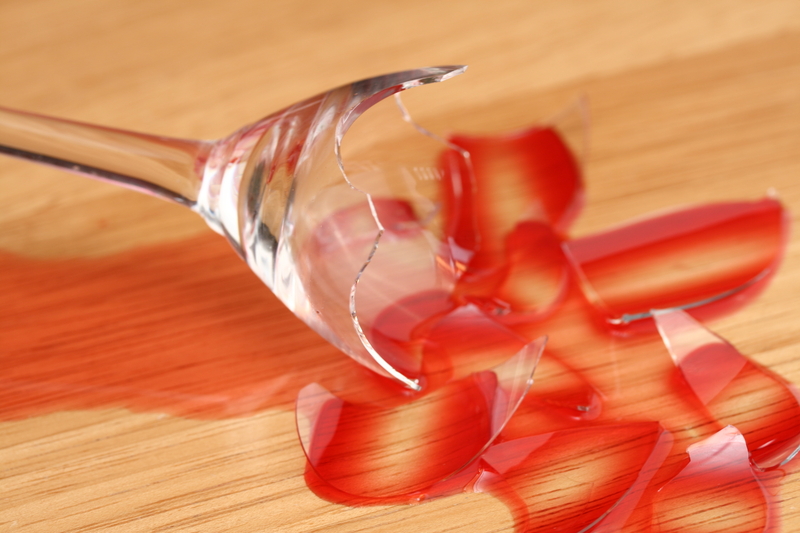How to Deal with Moldy Window Sills: Practical Solutions
Posted on 04/09/2025
How to Deal with Moldy Window Sills: Practical Solutions
If you're struggling with moldy window sills, you're not alone. Mold thrives in areas with moisture, and window sills are particularly susceptible due to condensation, leaks, and insufficient ventilation. In this comprehensive guide, we'll explore effective and practical solutions for eliminating mold on window sills, preventing its return, and understanding the underlying causes. By the end of this article, you'll have a clear action plan to keep your home healthier and your window sills looking fresh.

Why Do Window Sills Develop Mold?
Mold development on window sills is a common household problem. Understanding why it happens is key to solving and preventing it. Mold growth requires moisture, warmth, and organic material to thrive. Window sills, especially those made of wood, provide the perfect breeding ground when moisture accumulates due to:
- Condensation: Differences in indoor and outdoor temperatures result in water droplets forming on window glass and sills.
- Poor Ventilation: Rooms with insufficient airflow, like bathrooms or kitchens, trap humidity and boost mold growth.
- Leaky Windows: Damaged seals or frames allow rainwater to seep in.
- Neglected Cleaning: Dust and organic debris collect on window sills, feeding mold colonies.
Important: Mold isn't just unsightly--it can pose health risks, especially for those with allergies, asthma, or weakened immune systems.
How to Identify Mold on Window Sills
Identifying mold early on is crucial. Check your window sills regularly for these signs:
- Discoloration: Black, green, white, or brown patches or streaks.
- Musty Odor: An earthy, damp smell is a telltale sign of mold presence.
- Texture: Mold often appears fuzzy or powdery.
- Dampness: Persistently moist or cold sills increase risk.
*Tip:* Not all discoloration is mold. Some may be dirt or mildew; when in doubt, treat it as potential mold for safety.
How to Remove Mold from Window Sills: Step-by-Step Solutions
Follow this practical, step-by-step guide to remove mold from your window sills safely and effectively.
1. Gather Necessary Supplies
- Gloves and a mask (for personal protection)
- Protective goggles
- Disposable towels or microfiber cloths
- Small brush or old toothbrush
- Spray bottle
- Mild detergent or soap
- White vinegar or hydrogen peroxide
- Baking soda (optional)
- Bucket of warm water
- Fan or dehumidifier (for drying)
2. Prepare the Area
- Open windows for ventilation.
- Lay down old towels or plastic coverings to protect the floor and walls.
3. Remove Surface Mold
- Wearing gloves and a mask, gently wipe away visible mold using a damp microfiber cloth.
- For stubborn spots, use a brush or toothbrush to loosen the mold.
- Dispose of used cloths safely in a sealed plastic bag.
4. Clean with a Mold Solution
- Spray a solution of equal parts vinegar and water (or a 3% hydrogen peroxide solution) onto the affected areas.
- Let it sit for at least 10-15 minutes to penetrate and kill mold spores.
- Scrub again with a brush, focusing on corners and crevices.
- Wipe clean with a fresh damp cloth.
Why vinegar? Vinegar is a natural, non-toxic mold killer proven to eliminate over 80% of mold types. Avoid using bleach on porous surfaces like wood as it can worsen the problem by driving mold deeper.
5. Remove Odors and Residue
- Sprinkle baking soda onto the dried area to neutralize odors and absorb residual moisture.
- Vacuum or brush away the baking soda after a few hours.
6. Dry Thoroughly
- Use a fan or dehumidifier to dry out the window sill completely.
- Make sure the area stays dry for at least 24 hours to inhibit re-growth.
7. Inspect and Repeat if Needed
- If traces remain, repeat cleaning until the moldy window sill is fully restored.
Preventing Mold on Window Sills: Best Practices
Once you've tackled the immediate removal of mold from window sills, prevention is paramount to avoid recurrence. Below are essential strategies to keep your window sills dry, clean, and mold-free:
Improve Ventilation
- Open windows regularly to encourage airflow.
- Consider installing trickle vents if your windows allow for it.
- Use exhaust fans in high-humidity rooms, such as kitchens and bathrooms.
Reduce Indoor Humidity
- Maintain indoor humidity between 30% and 50% using a dehumidifier.
- Fix any plumbing leaks or dripping pipes near windows.
- Keep window blinds and curtains open during the day to let sunlight in, as UV rays help inhibit mold growth.
Maintain Window Integrity
- Check caulking and weatherstripping around windows for gaps or deterioration.
- Seal any leaks promptly with a good-quality exterior caulk.
- Repair or replace cracked or foggy panes that may trap moisture.
Regular Cleaning and Maintenance
- Dust and clean window sills once a week.
- Inspect for condensation and wipe it away promptly in the mornings or after rain.
- Use a diluted vinegar spray during cleaning for added mold prevention.
Eco-Friendly Solutions for Mold on Window Sills
If you prefer to avoid harsh chemicals, these eco-friendly alternatives can be as effective:
- Tea Tree Oil: Mix 1 teaspoon of tea tree oil in 1 cup of water and spray onto the moldy window sill. Leave to work for several hours before wiping away.
- Lemon Juice: Its natural acidity combats mold and leaves a fresh scent. Mix with a little water and spray onto problem areas.
- Baking Soda Paste: Combine baking soda with water to form a paste; apply directly, leave to dry, and scrub.
These natural remedies are especially suitable for homes with children, pets, or anyone sensitive to chemical fumes.
When to Call a Professional for Moldy Window Sills
While most cases of mold on window sills can be handled with DIY methods, there are situations when professional remediation is necessary:
- Mold reappears quickly even after treatment.
- Mold covers an area larger than 10 square feet.
- The sill is severely rotted or structurally compromised.
- You experience significant allergic reactions or respiratory issues.
- Suspected black mold (Stachybotrys chartarum) is present. This toxic variant can cause serious health problems.
*Mold remediation experts* use specialized equipment to detect hidden mold behind walls or under window frames and ensure safe, thorough removal.
Repairing and Restoring Mold-Damaged Window Sills
If mold has severely damaged your window sills--leading to rot, warping, or paint bubbling--additional repair may be required:
- Scrape away loose or flaking paint after cleaning and drying the area.
- Sand the surface to create a smooth base for repainting.
- Fill holes or cavities with wood filler or epoxy putty; sand again when dry.
- Apply an anti-mold primer followed by high-quality paint or varnish designed for humid environments.
- For irreparably damaged sills, replacement with treated wood or PVC is your best bet for long-term protection.
FAQ: Mold on Window Sills
Is mold on window sills dangerous?
Prolonged mold exposure increases the risk of allergies, respiratory infections, and aggravates asthma. If you notice health symptoms coinciding with moldy window sills, take immediate action and consult with a healthcare professional.
Can bleach be used to clean mold on window sills?
While bleach can remove surface mold from non-porous materials, it is not recommended for wood or painted window sills. Bleach cannot penetrate porous surfaces deeply, leaving spores behind. Use vinegar or hydrogen peroxide alternatives instead.
How often should I check my window sills for mold?
Monthly inspections are usually sufficient. Increase the frequency during wet seasons or if your home is especially humid.
Is painting window sills a good prevention?
Applying a high-quality, mold-resistant paint or sealant after cleaning provides another layer of defense. Ensure the wood is completely dry and mold-free beforehand.

Key Takeaways: How to Keep Window Sills Mold-Free
- Identify and fix moisture sources--condensation, leaks, poor ventilation.
- Clean frequently to eliminate food sources for mold.
- Use vinegar, hydrogen peroxide, or baking soda for safe, effective mold removal.
- Dry thoroughly after cleaning to prevent re-growth.
- Seal and maintain window sills to stop water intrusion.
- Act promptly at the first signs of mold to protect your health and home.
In summary, dealing with moldy window sills is a manageable process when approached systematically. By combining effective cleaning, proactive maintenance, and moisture control, you can ensure your windows remain a bright, healthy feature of your home. Implement these practical solutions, and you'll be well-equipped to tackle mold issues now and prevent them for years to come.
Additional Resources
By following these guidelines, you'll restore not just the appearance, but also the safety and comfort of your living space. Don't let moldy window sills diminish your home's value--take proactive steps today!


